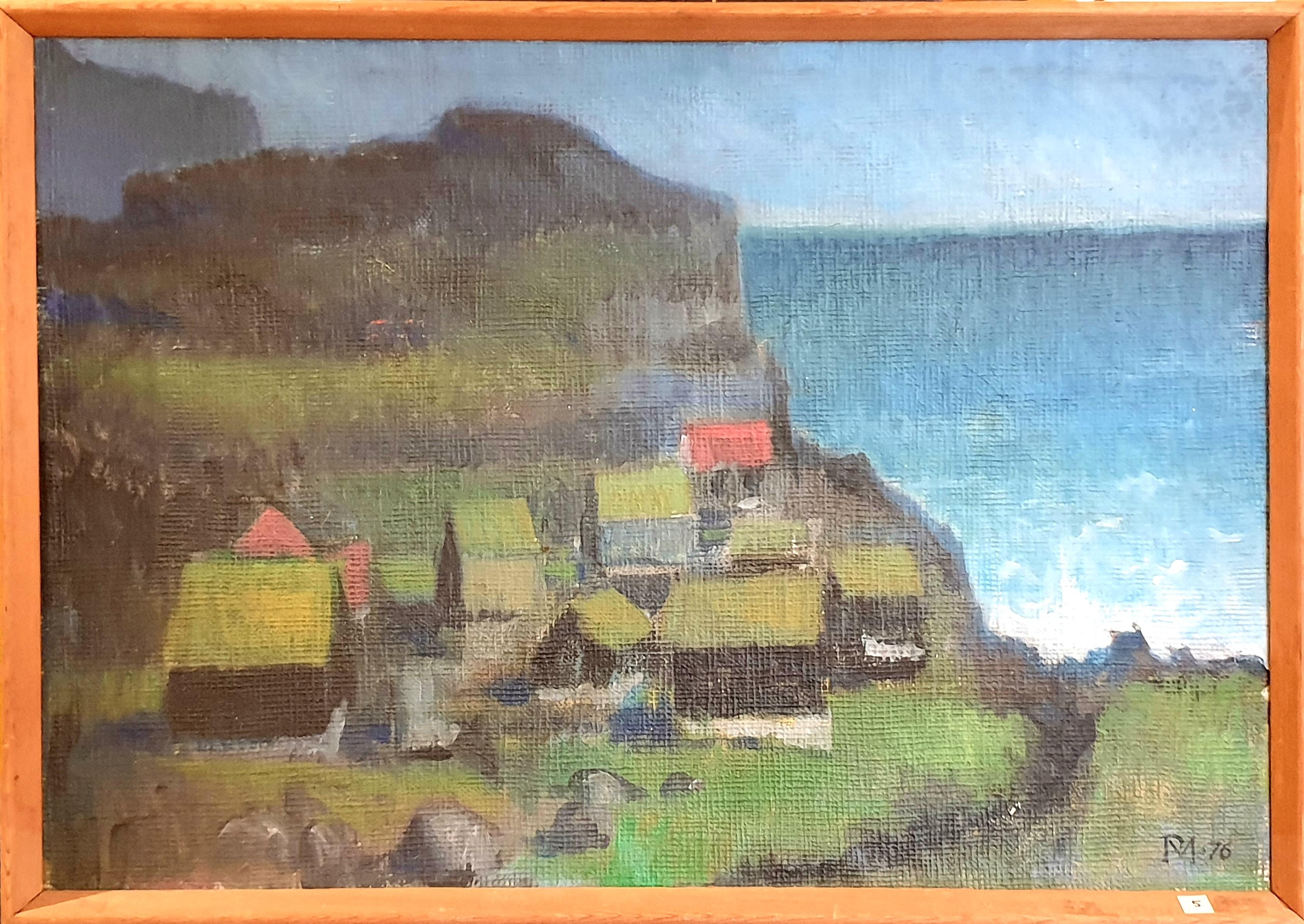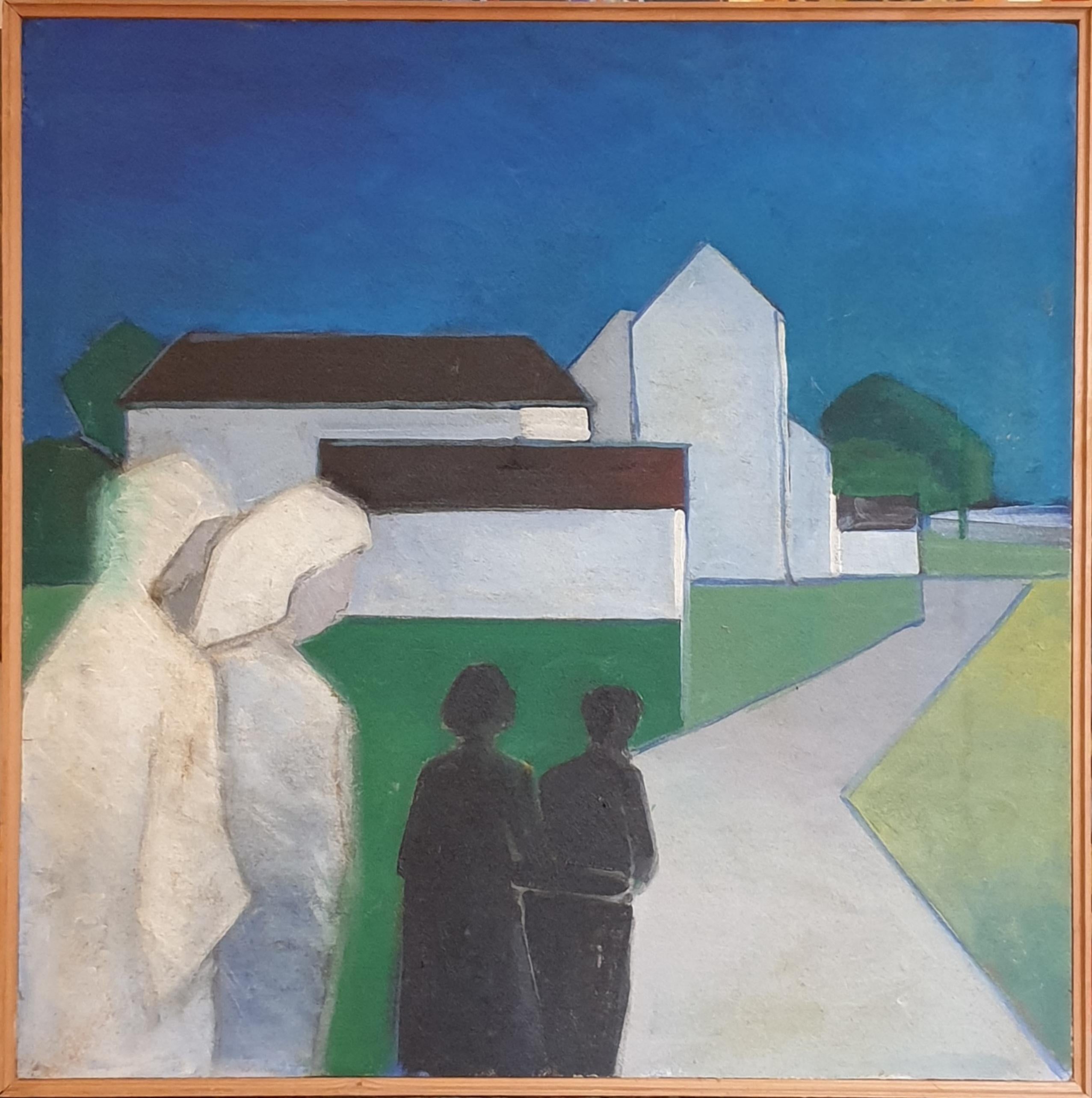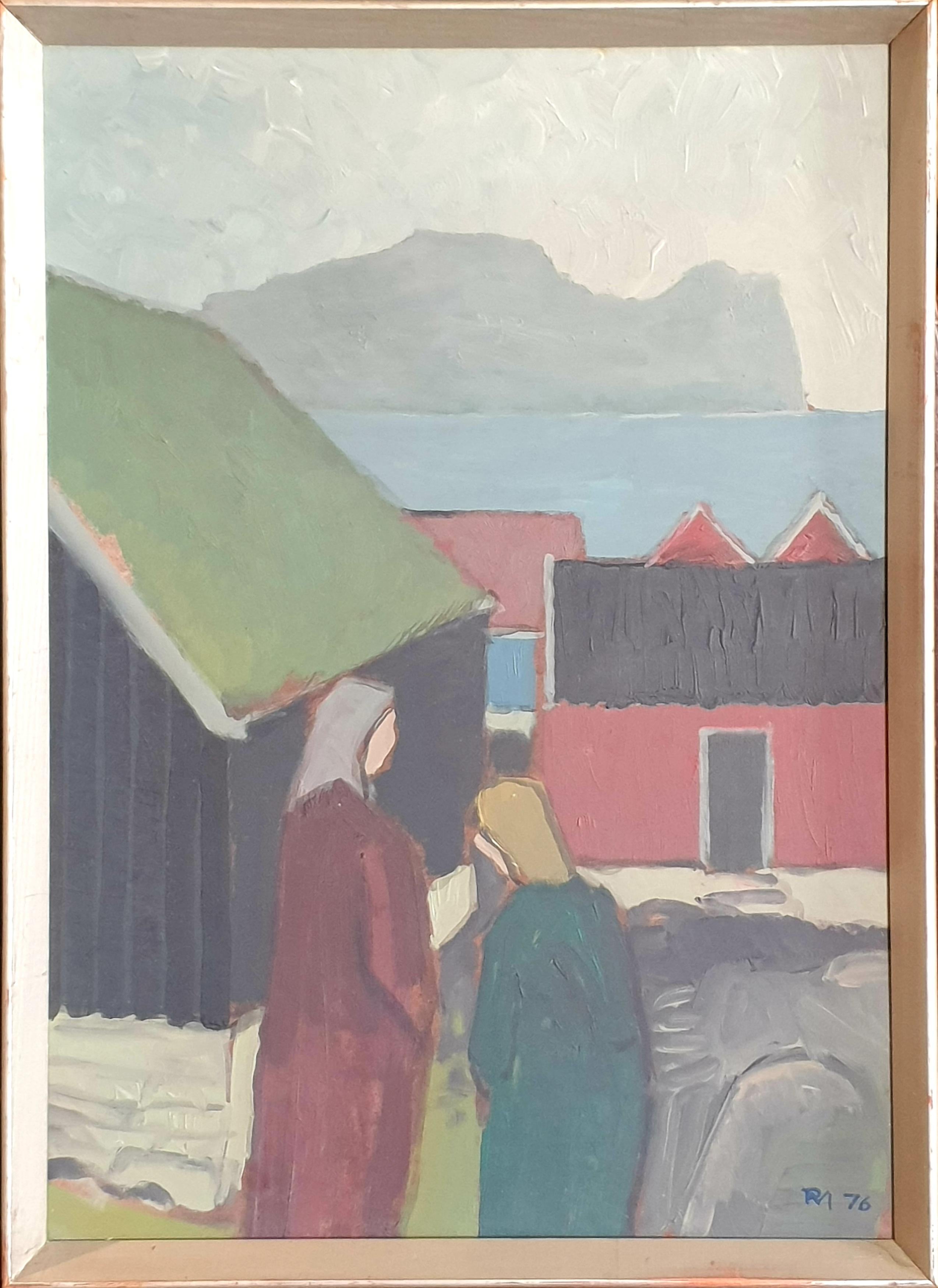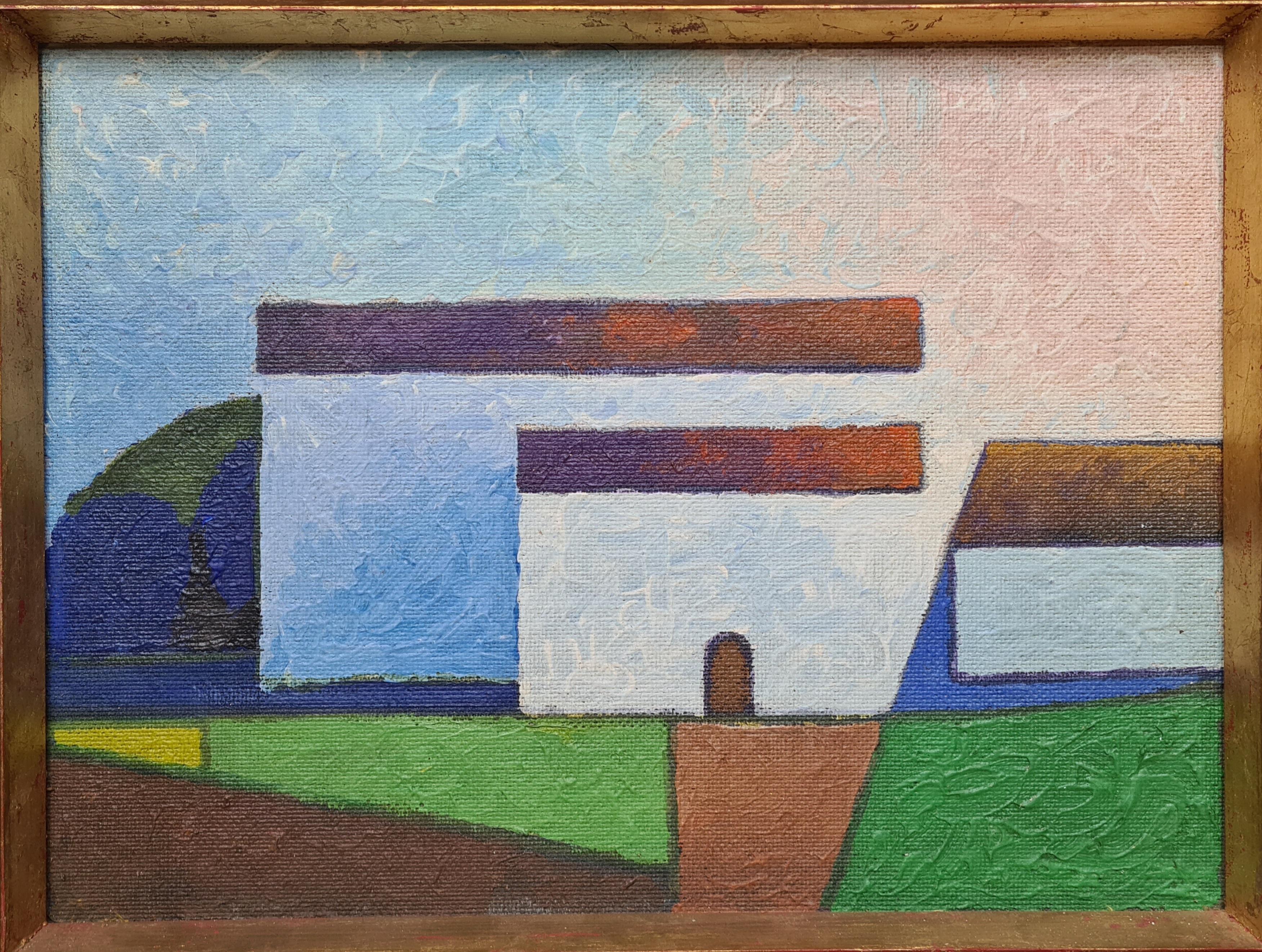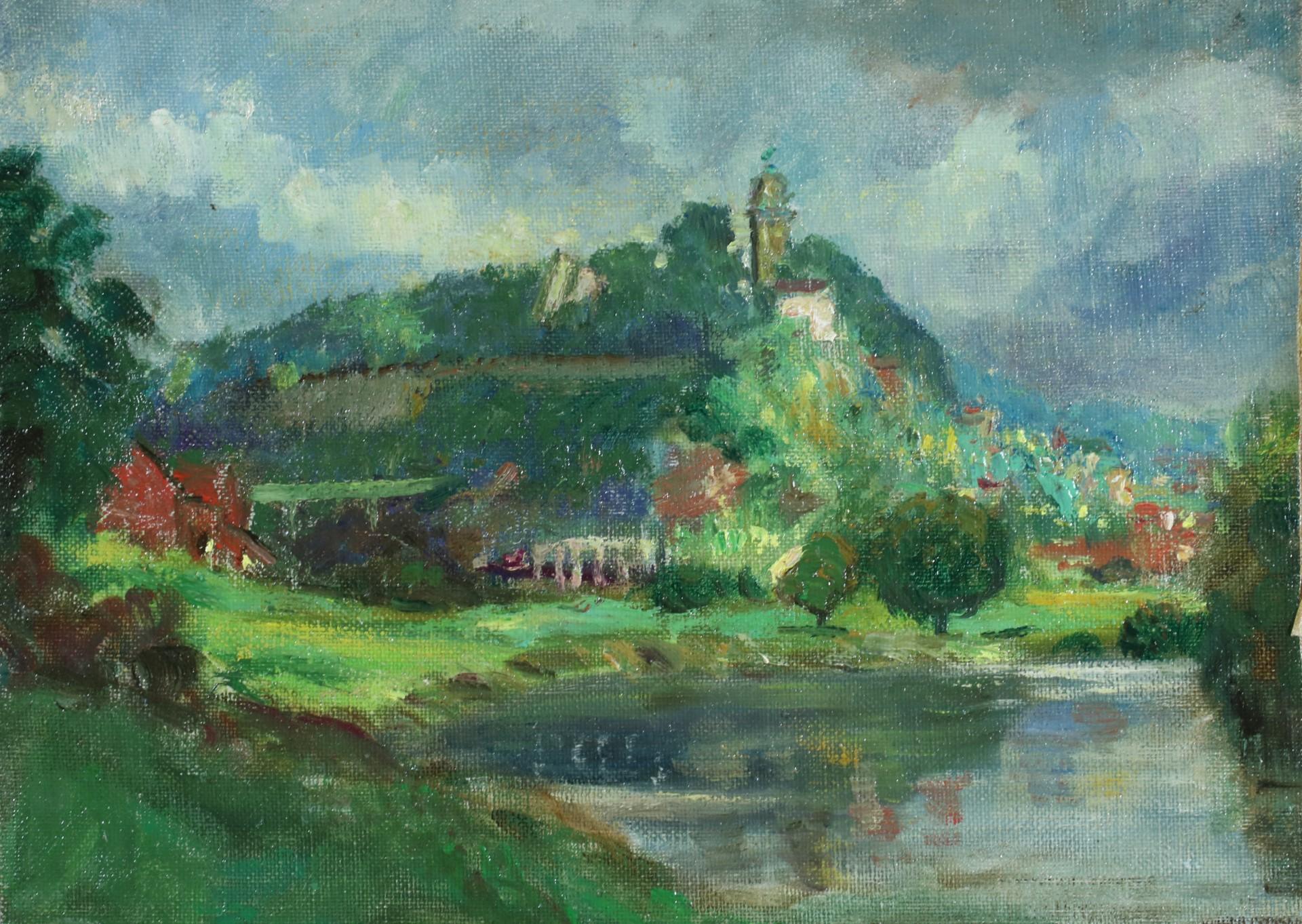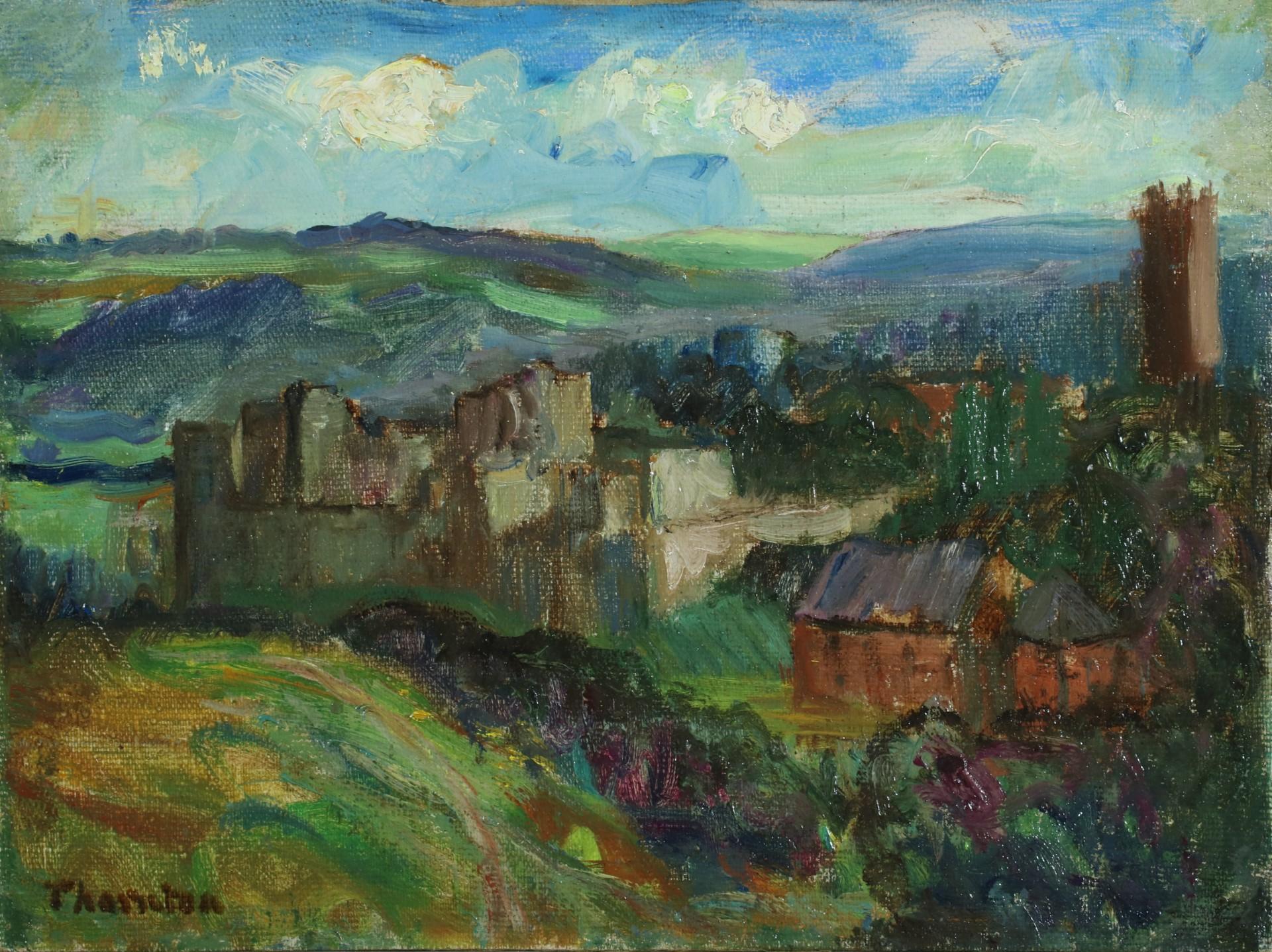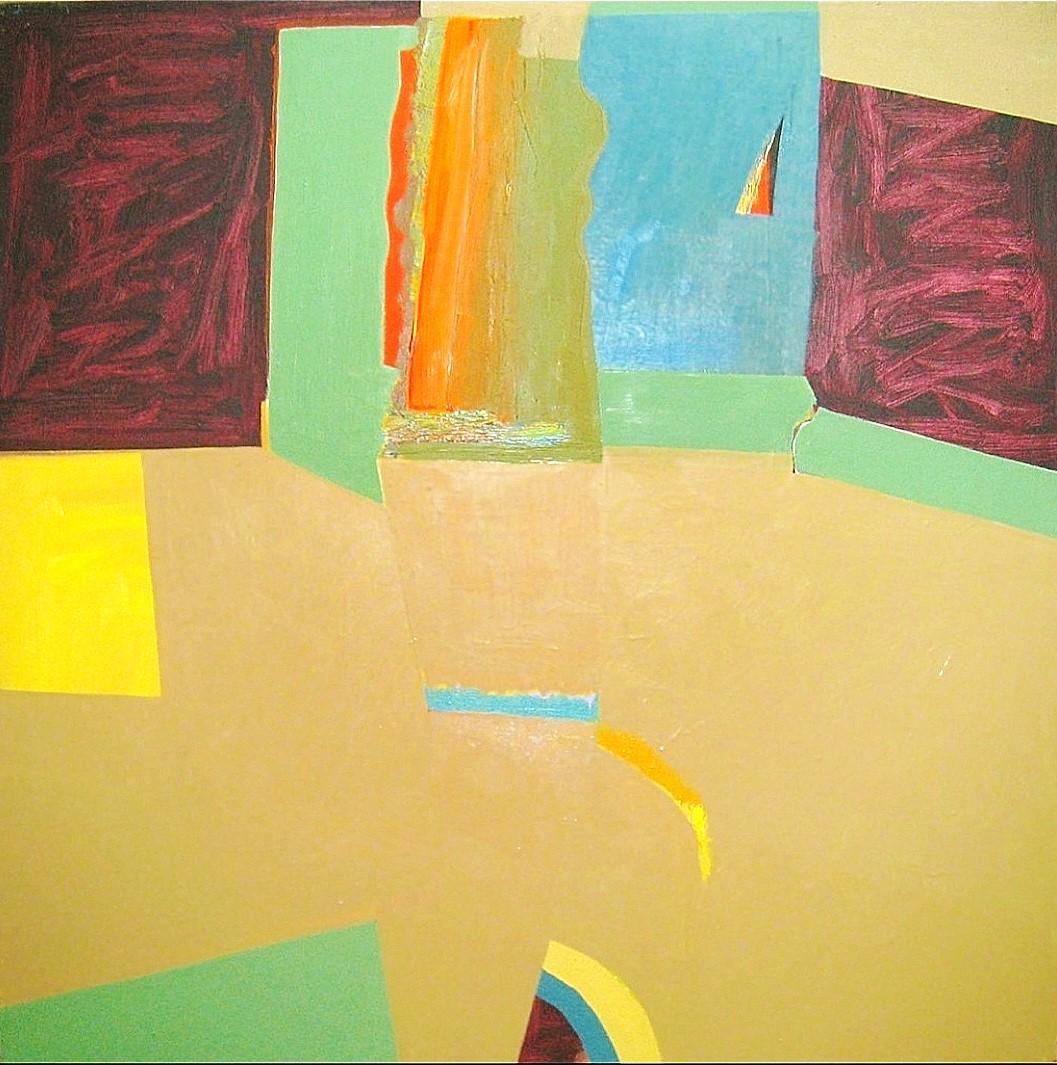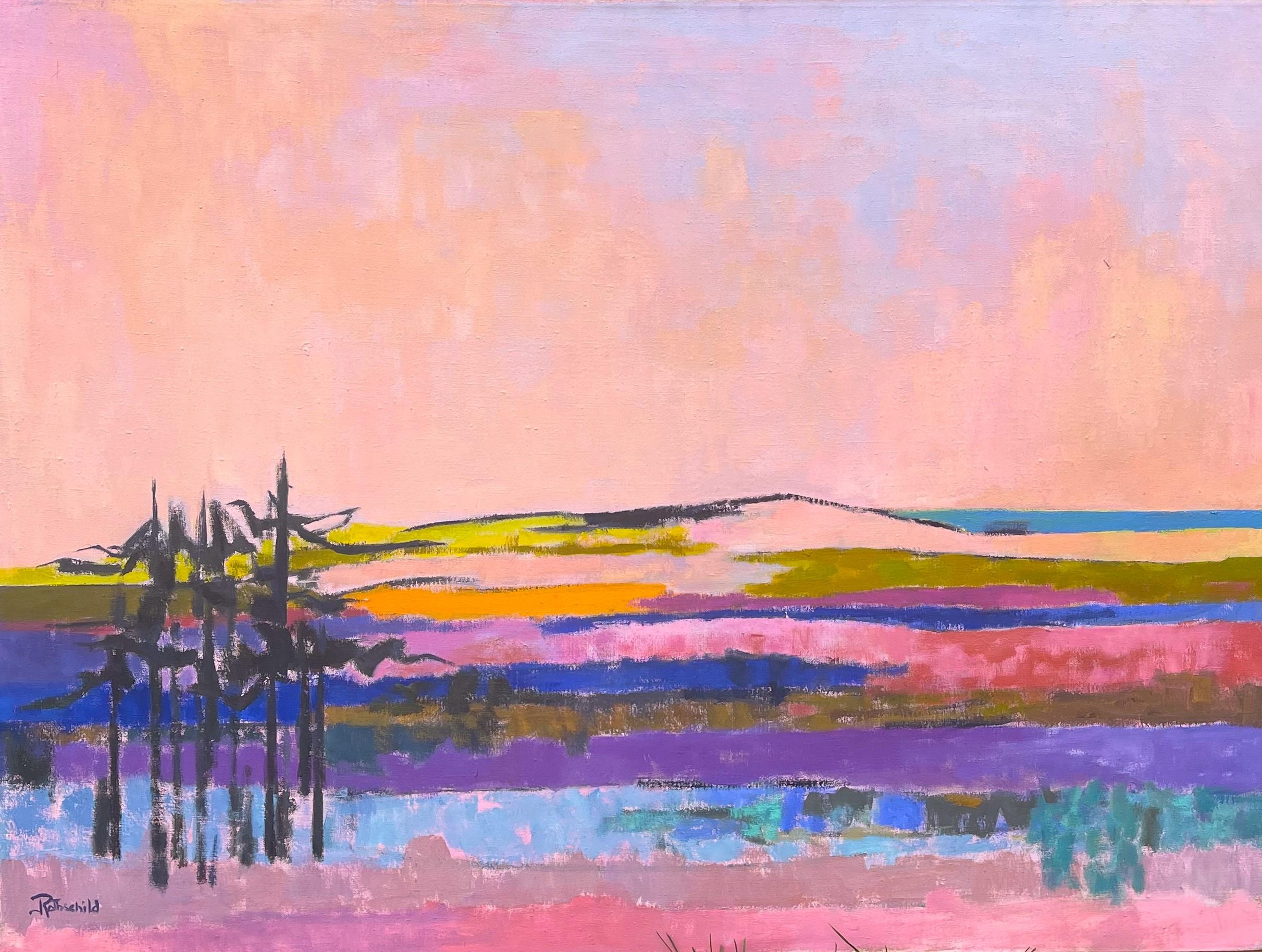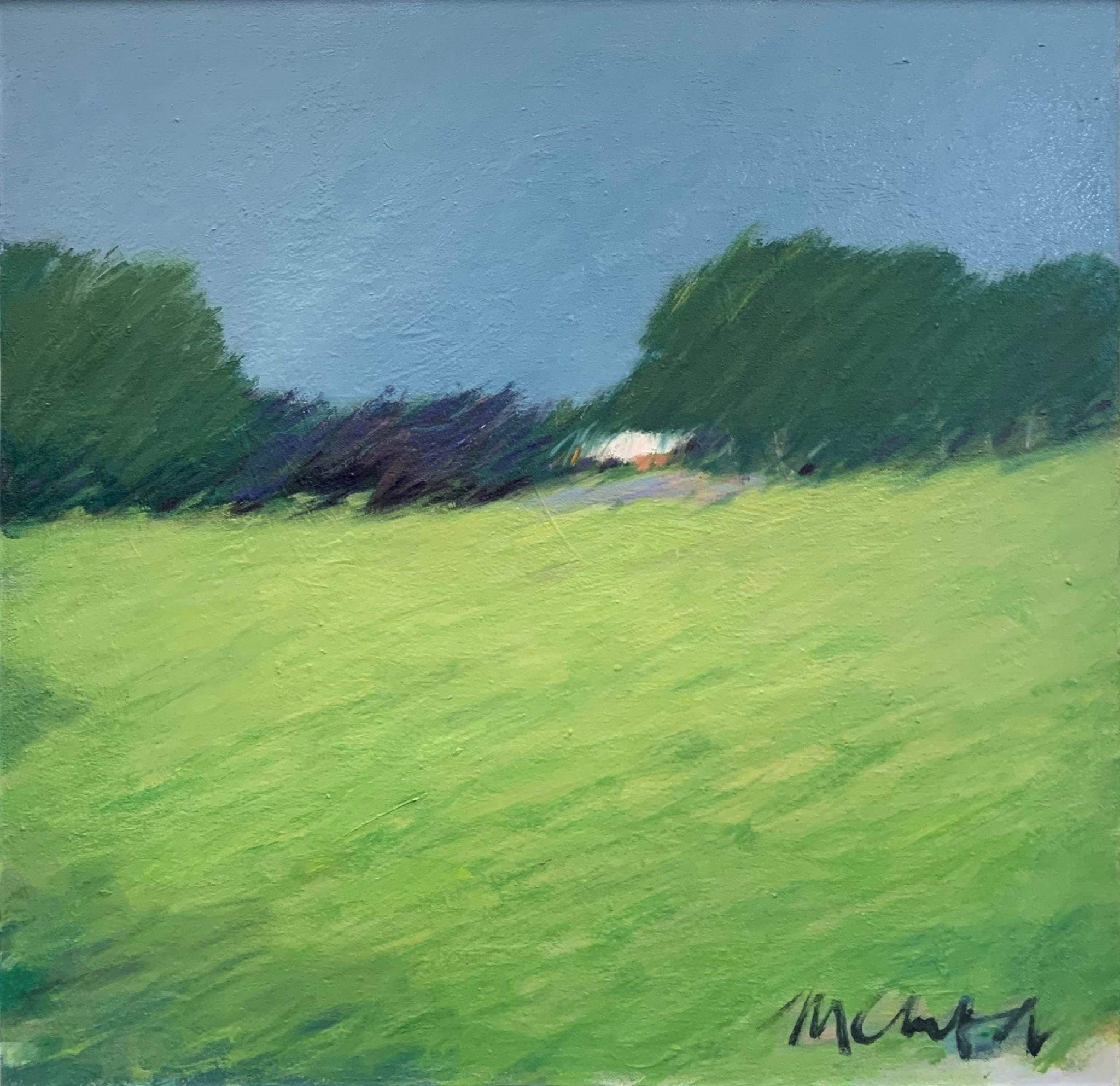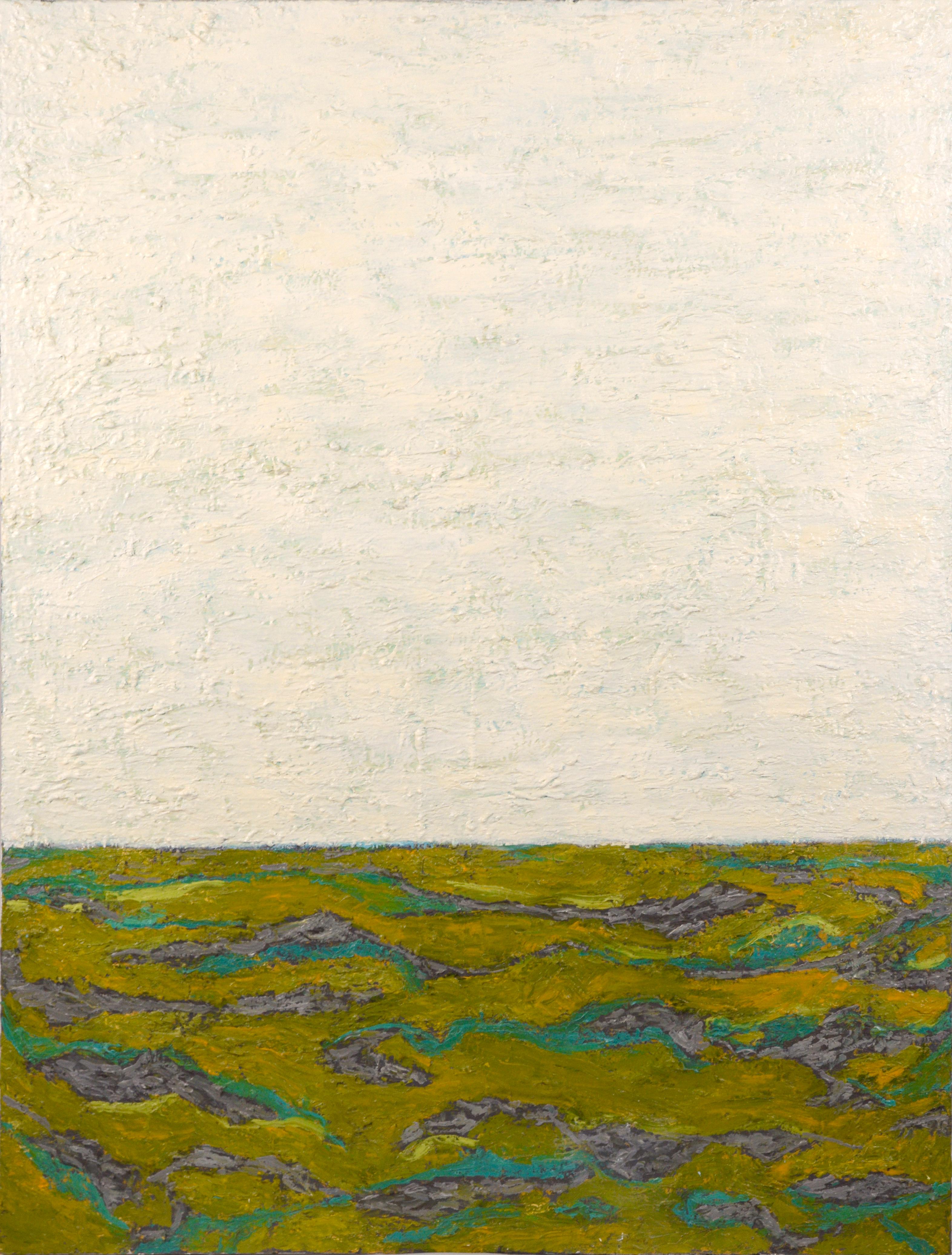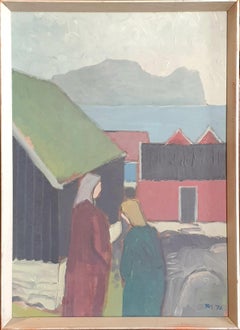
"Eastern End of Long Island Landscape, " Stan Brodsky, Montauk, Hamptons
View Similar Items
Want more images or videos?
Request additional images or videos from the seller
1 of 7
Stan Brodsky"Eastern End of Long Island Landscape, " Stan Brodsky, Montauk, Hamptons1977
1977
About the Item
- Creator:Stan Brodsky (1924, American)
- Creation Year:1977
- Dimensions:Height: 21 in (53.34 cm)Width: 16.5 in (41.91 cm)
- Medium:
- Movement & Style:
- Period:
- Condition:
- Gallery Location:New York, NY
- Reference Number:1stDibs: LU184129925222
Stan Brodsky
Born in Brooklyn, NY 1925
Died NY 1919 Education 1959 Ed.D., Columbia University 1950 M.F.A., Painting, Iowa University 1949 B.J. Photo-Journalism, Missouri University Selected Solo Exhibitions The Impact of Color, essay by Phyllis Braff, June Kelly Gallery, New York Stan Brodsky: The Gesture of Color, Port Washington NY June Kelly Gallery/concurrent with retrospective exhibition, Stan Brodsky: The Figure, 1951-2006, Hofstra University Museum Gallery Merz, Sag Harbor, NY
Gallery North, Setauket, NY June Kelly Gallery, New York
Stan Brodsky: Paintings, Gallery Merz, Sag Harbor, NY Elaine Benson Gallery, Bridgehampton, NY
June Kelly Gallery
The University of Bridgeport, CT
Works from the 90’s, Port Washington
Landscape As Memory, June Kelly Gallery, New York
Sculpture, Paintings & Prints, Gallery North, Setauket, NY New Paintings, June Kelly Gallery/current with retrospective exhibition
The Art of Stan Brodsky, Heckscher Museum of Art, Huntington, NY; catalogue Recent Paintings, June Kelly Gallery, New York New Paintings: Stan Brodsky/Karin Batten, June Kelly Gallery, New York Nassau County Museum of Art, Roslyn, NY Gallery North, Setauket, NY Nassau Community College, Garden City, NY Bloomsburg State College, PA Lubin Alumni House, Syracuse University, NY Lerner-Heller Gallery, New York
Benson Gallery, Bridgehampton, NY Heckscher Museum of Art, Huntington, NY Roko Gallery, New York Selected Group Exhibitions Hofstra University Museum, Hempstead, NY
Children’s Pleasures:Celebrations of Childhood, curated by Donna Barnes, Ph.D.,
Emily Lowe Gallery, Hofstra University Museum, Hempstead, NY; catalogue Long Island Moderns: Artists on the North Shore from Edward Steichen to Cindy Sherman,
Heckscher Museum, Huntington, NY; catalogue
Hidden Gems : Works on Paper, June Kelly Gallery, New York
Art League of Long Island Gallery, Dix Hills, NY Figurative and Historical Paintings and Photographs, Heckscher Museum of Art, Huntington, NY Abstraction at 40, Gallery North, Setauket, NY
10 Artists: Defining Abstraction, organized by the June Kelly Gallery, Pfizer, New York Art Center, Westport, CT
Alpan Gallery, Huntington, NY Inaugural Exhibition, Art League of Long Island
Gallery North, Setauket, NY Alpan Gallery, NY 20th Century Long Island Landscapes, Long Island Public Collections Baltimore Museum of Art, MD
Fine Arts Museum of the South, Mobile, AL
Heckscher Museum of Art, Huntington, NY
Housatonic Museum of Art, Bridgeport, NY
Museum of Fine Arts, St. Petersburg, FL
Parrish Art Museum, Southampton, NY
Pensacola Museum of Art, FL.
Telfair Museum of Art, Savannah, GA
William A. Farnsworth Museum, Rockland, ME
Long Island Museum of American Art, Stony Brook, NY
Guild Hall Museum, East Hampton, NY
Neuberger Museum of Art, Purchase, NY
Delaware University, Newark, DE
New York University, New York
Long Island University, C.W. Post Campus, Brookville, NY
AT&T, Chicago, IL
Campbell Mithun Esty, Southfield, MI
Cold Spring Harbor Laboratory, Cold Spring, NY
Newsday, Melville, NY
Port Authority, World Trade Center, New York
Hyde Collection, Glen Falls, NY
Printmaking Workshop, New York
About the Seller
5.0
Platinum Seller
These expertly vetted sellers are 1stDibs' most experienced sellers and are rated highest by our customers.
Established in 2021
1stDibs seller since 2022
61 sales on 1stDibs
Typical response time: 1 hour
More From This SellerView All
- "The Green Parasol, " Henry Hannig, American Impressionist, Woman in Beach SceneBy Henry HannigLocated in New York, NYHenry Charles Hannig (1883 - 1948) The Green Parasol Oil on canvas mounted on board 6 x 7 3/4 inches Provenance: R.H. Love Galleries, Chicago, Illinois Private Collection, Lake Orion, Michigan Hannig, born in Hirschberg, Germany on 27 February 1883, came to America with his parents at the age of seven. He attended school in the southwest suburbs before the family settled in Chicago. Young Henry enrolled in the Chicago Academy of Fine Arts where Lawton Parker became his mentor. He made ends meet by working in industrial design and illustration. By 1908 he was a pupil in the School of the Art Institute of Chicago where students followed the traditional European drawing curriculum, beginning with the copying of master engravings and drawing after plaster casts, then concentrating on the nude figure. Students worked toward the goal of winning various academic prizes. One of Hannig's fellow students was Louis Ritman...Category
1910s American Impressionist Figurative Paintings
MaterialsCanvas, Oil, Board
- From the Grandstand - View of Racetrack and Crowd, Saratoga Springs, New YorkBy Anne DiggoryLocated in New York, NYAnne Diggory (b. 1951) From the Grandstand, Saratoga Springs Racecourse, New York Oil on panel 12 x 9 inches Anne Diggory lives in Saratoga Springs, NY, ...Category
1970s Contemporary Figurative Paintings
MaterialsBoard, Oil
- "Tabac" Charles Green Shaw, Tobacco, Smoking, Park Ave Cubist, AAABy Charles Green ShawLocated in New York, NYCharles Green Shaw Tabac, circa 1935 Signed on the reverse Oil on canvasboard 5 3/4 x 8 3/4 inches Provenance: Washburn Gallery, New York, 1982 Private Collection (acquired from the above) Christie's, The Collector, October 20, 2021, Lot 307 Private Collection, Scarsdale, New York (acquired directly from the above) Literature: Hilton Kramer, "Charles Shaw: In the Minimal Tradition," New York Times, February 21, 1982, Section 2, p. 25. Charles Green Shaw was born in 1892 to a wealthy New York family. He lost both his parents at a very young age; his mother died when he was just three years old. Despite the early loss of his parents, Shaw lived the whimsical life of a New York socialite. As a beneficiary to an inheritance based in part upon the Woolworth fortune, he was brought up surrounded by the well-bred, well-groomed and well-moneyed citizens of New York’s elite social class. His social status as an adolescent was cultivated while spending summers in Newport and attending Christmas balls at Mrs. W.K. Vanderbilt’s. At age six, Shaw began to take an interest in drawing, and by nine, he was known to have a fondness for sketching historical costumes. After graduating from Yale University in 1914, Shaw spent a year studying at Columbia University’s School of Architecture. Subsequently he served for eighteen months as a Lieutenant in World War I. After his service, Shaw returned to New York and tried his hand as a businessman selling real estate, but his attempt was short lived. In the early 1920s, Shaw began his career as a journalist and novelist. He achieved professional success, writing consistently for magazines such as The New Yorker, Vanity Fair and The Smart Set. Shaw’s writing was a record of his approvals and disapprovals of the social crowd to which he belonged. His profession along with his social pedigree, brought him in contact with a number of the most significant figures of the 1920s such as, F. Scott Fitzgerald, Sinclair Lewis, George Gershwin, George Jean Nathan and the American artist George Luks. Some of his profiles included celebrity caricatures used as illustrations, these were the publics’ first look at Shaw’s artistic ability. In 1928, a collection of Shaw’s articles and interviews were published in one volume titled, The Low Down. Just previous to the stock market crash and the end of the Jazz Age, Shaw left New York and traveled to Paris and London. He arrived in Paris in 1929. In an autobiographical note Shaw suggests it was on this trip when he first began to paint seriously. London also acted as a great source of motivation for the budding artist. He began to sketch everyday in St. James’s Park, making large pastels of its vistas in the style of Cezanne. When he returned to New York in 1932, Shaw considered himself a painter. Success for Shaw came quickly with his first solo exhibition mounted at the Valentine Gallery in 1934. The following year Albert Eugene Gallatin included works by the artist in an unprecedented solo exhibition at his Gallery of Living Art at New York University. Shaw further cemented his reputation as an artist through his association and friendship with fellow abstract artists Morris and Gallatin. The trio soon was regarded as ‘the Park Avenue Cubists’. As a founding member of the American Abstract Artists, Shaw became an impassioned defender of the style. His 1938 essay in the American Abstract Artists yearbook, “A Word to the Objector”, acted as a defense against those who failed to see the illustrative quality of abstract art and scolded those who disregarded American artists as serious Abstractionists. He was also an influential force at the Museum of Modern Art, where he sat on the Advisory Board from 1936 to 1941. In the later years of Shaw’s life he continued to produce abstract paintings, yet in a more private manner. He was known to be a reserved man— a ‘gentleman’; not much is known about his personal life in these later years. During this time he maintained his career as a writer, publishing the well-known children’s book, It Looked Like Spilt Milk in 1940 and two books of poems in 1959 and 1962. In 1974, Shaw died...Category
1930s Cubist Landscape Paintings
MaterialsOil, Board
- "Rainy Day, New York City" Modernist Urban Cityscape Mid-Century Street SceneBy Leon DoliceLocated in New York, NYLeon Dolice (1982 - 1960) Rainy Day, New York City, circa 1940 Oil on canvasboard 20 x 16 inches Signed on the reverse Provenance: Private Collection, Massachusetts Private Collecti...Category
Mid-20th Century American Modern Landscape Paintings
MaterialsOil, Board
- "Low Tide - Brittany, France, " Henriette Oberteuffer, Coastal LandscapeBy Henriette Amiard OberteufferLocated in New York, NYHenriette Amiard Oberteuffer (1878 - 1962) Low Tide - Brittany, France Oil on canvasboard 18 x 21 1/2 inches Signed lower right Painter, printmaker, and teacher Henriette Amiard Oberteuffer (1878-1962) was born in Le Havre, France and studied at the Academie Julian in Paris with Jean-Paul Laurens and Benjamin Constant. She moved with her husband and fellow artist George Oberteuffer...Category
Early 20th Century American Impressionist Landscape Paintings
MaterialsOil, Board
- "Child in an American Landscape" James Gantt, Midwestern Regionalism, MissouriLocated in New York, NYJames Britton Gantt (1911 - 1984) Child in an American Landscape, 1940 Egg tempera on board 17 1/2 x 14 inches Signed and dated lower right Provenance: Private Collection, San Francisco Regarding this painting, the artist's daughter said, "The subject matter of your painting reflects my father's propensity for presenting minority figures with dignity, as well as an admiration for the contributions of hard-working people. The painting's background packs in details reminiscent of the technique he used working on mural projects." Painter, printmaker, muralist. Born in Lawrence, Douglas County, Kansas (some sources wrongly indicate Kansas City), the son of Euphemia Lane Fox Blackburn (1883 – 1929) and Charles Whittle Gantt (1881 – 1952). He was the grandson and namesake of Judge James Britton Grant (1845 – 1912), a former Chief justice of the Supreme Court of Missouri. His father, Charles, though trained as a lawyer, suffered from alcoholism and instead worked for the railroad. James Gantt...Category
1940s American Realist Portrait Paintings
MaterialsBoard, Oil
$13,000 Sale Price35% Off
You May Also Like
- Danish Mid-Century Colourfield Oil on Board of Houses in a Coastal Scene.Located in Cotignac, FRDanish oil on board covered in a coarse canvas. A painting of houses in a coastal landscape by Poul Møller. The painting is signed PM and dated 76 to the bottom right and to the reve...Category
Mid-20th Century Color-Field Landscape Paintings
MaterialsBoard, Oil
- Danish Mid-Century Colourfield Oil on Board of Houses and People in a Landscape.Located in Cotignac, FRDanish oil on board painting of couples making their way in a landscape, by Poul Møller. Though not signed the painting has a dated artist's label to the side of the frame. Presented...Category
Mid-20th Century Color-Field Landscape Paintings
MaterialsOil, Board
- Danish Mid-Century Colourfield Oil on Board of People and Houses by the Coast.Located in Cotignac, FRDanish oil on board painting of two women making their way home in a coastal landscape, by Poul Møller. The painting is signed PM and dated 76 to the bottom right corner. To the reve...Category
Mid-20th Century Color-Field Landscape Paintings
MaterialsOil, Board
- Mid Century Danish Colourfield Buildings in a LandscapeLocated in Cotignac, FRDanish oil on board painting of buildings in a landscape by Poul Møller. Though not signed the painting has a dated artists label to the back of the frame. Presented in a plain gold ...Category
Mid-20th Century Color-Field Landscape Paintings
MaterialsOil, Board
- View of Bridgnorth, Shropshire with river, tower, hills & buildings oil paintingLocated in ludlow, GB"Looking down towards Ludlow Castle" and "View of Bridgnorth" Oils on Canvas laid on board 9 by 12 inches, Signed and Framed (Framed in handmade gold leaf frames 14 by 17 inches) £28...Category
Early 20th Century Color-Field Landscape Paintings
MaterialsOil
- Ludlow Castle, Shropshire with Clee Hills beyond - bright landscape in OilsLocated in ludlow, GB"Looking down towards Ludlow Castle" and "View of Bridgnorth" Oils on Canvas, laid on board 9 by 12 inches, Signed and Framed (Framed in handmade gold leaf frames 14 by 17 inches) £2...Category
Early 20th Century Color-Field Landscape Paintings
MaterialsOil
Recently Viewed
View AllMore Ways To Browse
Horse Shoe Art
Horse Mask
Vintage 4 Color Pen
Vintage Jewelry Brooklyn
Book End Horse
Silverware For 20
Gas Mask
Retro French Farmhouse Table
Vintage Farmhouse End Tables
Montauk Sign
French Painted Farmhouse Table
Retro French Silverware
Vintage Jewelry Long Island
Vintage Gas Oil Signs
Vintage Gas Oil Sign
Shoe Cart
Memoir Jewelry
Vintage Horse Book Ends
